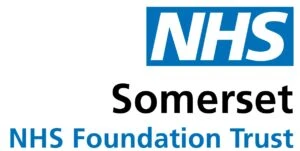
Spotlight
Yeovil Hospital team plays key role in national Wet AMD research
Ophthalmologists and researchers at Yeovil Hospital have collaborated on a significant national eye care study.
The Eye Neon study, led by Moorfields Eye Hospital's Dr Sobha Sivaprasad, investigates the likelihood of wet age-related macular degeneration (Wet AMD) developing in both eyes.
Mr Paritosh Shah, a consultant ophthalmologist at Yeovil Hospital, highlights our trust's involvement in the study.
He says: “In our eye clinics, we frequently encounter patients with Wet AMD, a condition that can severely impact vision if left untreated. It is usually treated with courses of eye injections.
“We know that a significant number of patients with Wet AMD in one eye will also develop it in their other eye, but the exact proportion remains unknown.
“This study aimed to gather more information to potentially predict factors which increase the risk of developing the condition in the other eye. This predictive capability could allow us to advise patients on managing the condition earlier and manage our NHS resources better.”
Mr Shah also emphasises the potential benefits: "We anticipate gaining a clearer understanding of the patient profile of whom are more susceptible to developing Wet AMD in their second eye,” he continues. “The data may also give information on the time it takes for the condition to develop in the initially unaffected eye."
While acknowledging that there is currently no cure for Wet AMD, Mr Shah stresses the value of early awareness. “Our belief is that being forewarned is being forearmed,” he says. “Identifying a particular patient profile could empower individuals to make positive lifestyle adjustments and become more proactive in their healthcare.
"Our hope is that this research will better prepare patients for the potential of facing this condition in the future. It might even reveal areas where preventative measures or early treatment could reduce the risk in the other eye."
Mr Shah also commended the dedication and efforts of his colleagues in recruiting patients into the study. "Colleagues in our ophthalmology team at Yeovil Hospital truly stepped up for this study, undergoing training to perform the necessary scans,” he adds.
"We are fortunate that our NHS trust has invested significantly in ophthalmology care, granting us access to optical coherence tomography angiography (OCTA), a non-invasive retinal imaging technique.
"Without OCTA, the only way to obtain this information would involve injecting dye into the patient's eye and taking numerous photographs, a 45-minute procedure that can caused nausea and other side effects."
"A real highlight was exceeding our recruitment target, which is remarkable for a team of our size.
“This is a testament to the dedication of all the colleagues involved – our eye clinic nursing team and doctors, research team, and of course, all the patients who agreed to take part. All data was anonymised before being sent to the research team at Moorfields."
"We were one of 28 study sites nationwide, with a total of 800 patients participating, providing a robust dataset for analysis.
"Our patients were very enthusiastic about participating, with many expressing reassurance in being cared for within a research-active setting dedicated to improving care for both current and future patients.
"We anticipate receiving the study outcomes in 2026, following the central analysis of all collected data."


